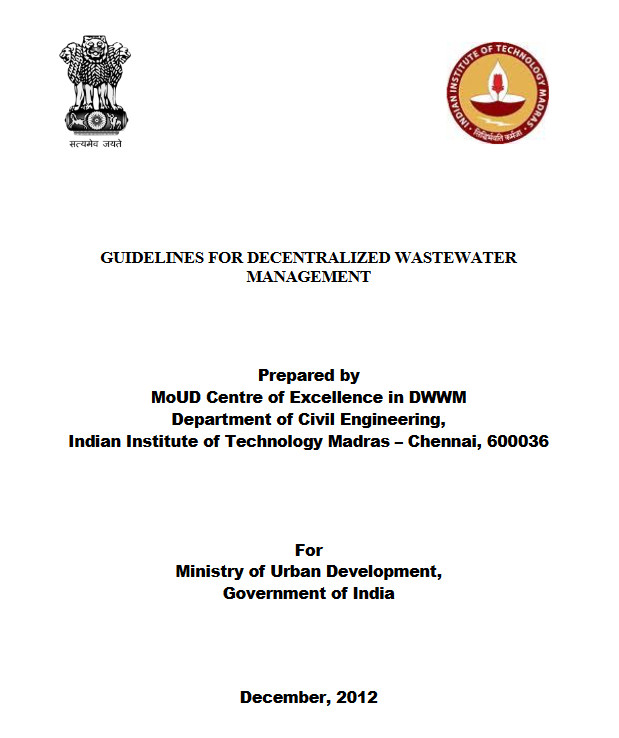Guidelines for Decentralized Wastewater Management
 |
guide Dec 2012 ; 50 pages
Aut. B. S. Murty & Ligy Philip & S. Sundaramoorthy
Ed. IIT Madras - Chennai MoUD - New Delhi
Téléchargeable sous format: PdF
Téléchargeable chez l'éditeur
Abstract:
This guideline provides an insight into ways and means of planning and executing decentralized wastewater management systems (DWWM) by Urban Local Bodies.
DWWM treats wastewater of individual houses, apartment blocks or small communities close to their origin. This system is a combination of many technologies within a given geographical boundary, namely, onsite systems, low cost collection systems and dispersed siting of treatment facilities.
The purpose of this capsule guideline is to provide the decision makers with an essence on various aspects of decentralized wastewater management. The soft version of the capsule guideline has several links to the appropriate chapters / sections of the manual to provide detailed information to engineers / consultants who may be engaged in planning, design, operation and maintenance. Contents:
The guideline provides details on the following aspects:
Advantages and disadvantages of DWWMs
Advantages and disadvantages of on-site wastewater treatment systems
Situations suitable for DWWM
Planning for DWWM
Design period for DWWM
Components of DWWM
Wastewater collection system
Characteristics of wastewater
Selection on available technologies for DWWM
On-site treatment systems
Sludge management
Operation and maintenance
Reuse option of treated wastewater
Regulations
Operation and maintenance of DWWMS
Other aspects- technical, financial, social, legal
Public-Cible:
Mot clef: |
Editeurs/Diffuseurs: |
|
IIT Madras
-
Indian Institute of Technology Madras - Chennai - Inde |
MoUD
-
Ministry of Urban Development - New Delhi - Inde |
En cas de lien brisé, nous le mentionner à communication@pseau.org